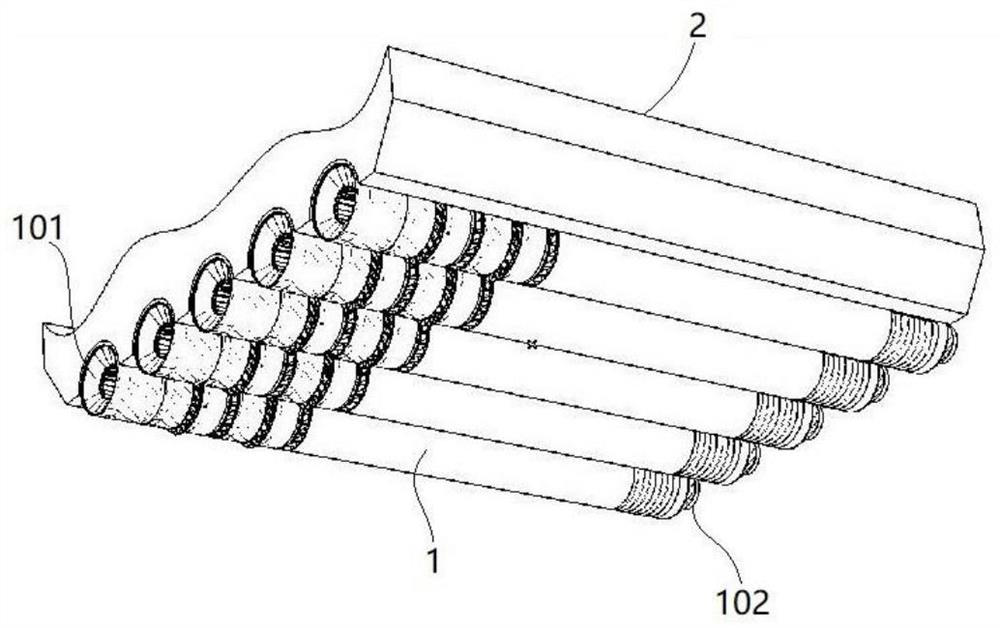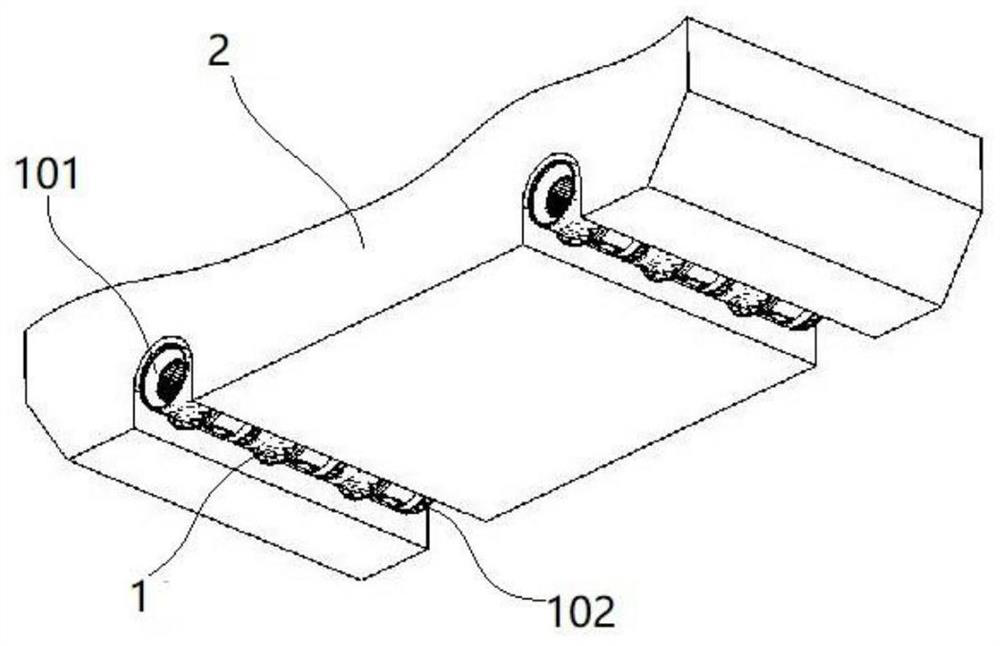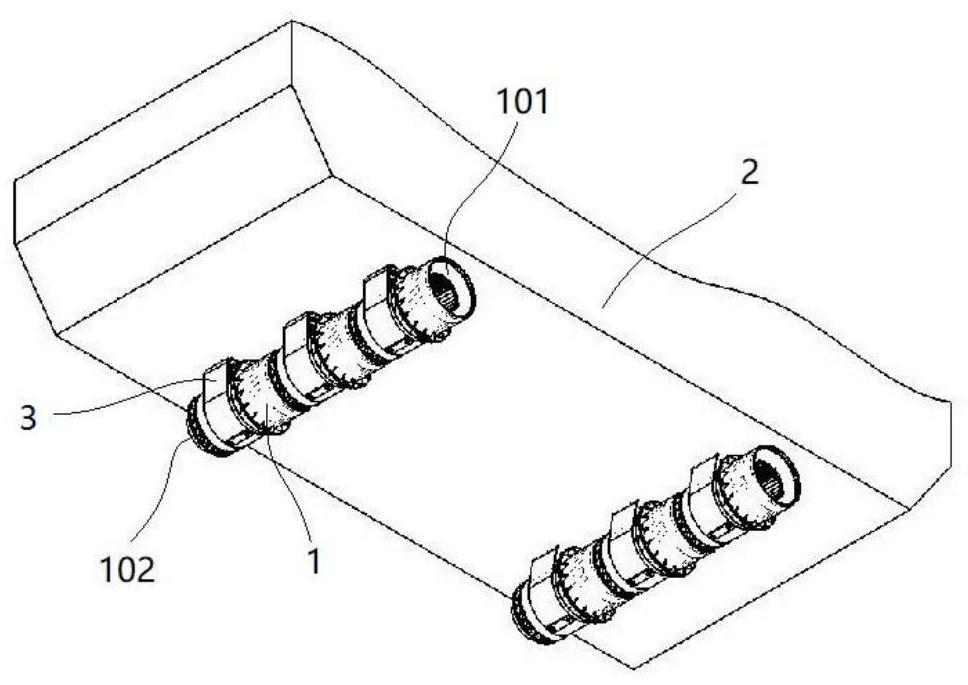[0050] 1. The
propeller power transmission system and structure are generally more complicated, and the
propeller power transmission system and structure of large ships, especially large surface ships such as aircraft carriers, can be described as very complicated, which needs to occupy a considerable ship's storage capacity, resulting in a waste of effective storage capacity of the ship;
[0051] 2. The manufacture of large, especially super-large propellers requires the consumption of a large amount of special materials and the support of special
processing equipment, which significantly increases the difficulty and cost of manufacturing, and is not easy to assemble, disassemble and maintain;
[0052] 3. Large, especially super-large propellers are heavy, and the self-weight of a single super-large
propeller can even reach hundreds of tons, which increases the ship's own weight and increases the ship's navigation resistance;
[0053] 4. Large, especially super-large propellers are prone to
cavitation during operation, causing damage to the propeller blade body, resulting in reduced propulsion efficiency and unnecessary
noise;
[0054] 5. For large, especially super-large propellers, when the ship is under no-load or light-load navigation, the blades will grow out of the water surface, resulting in periodic uneven force on the propeller blades during rotation;
[0055] 6. Propellers, especially large and super-large propellers, are likely to cause mechanical damage to
aquatic organisms;
[0056] 7. The propeller propulsion is at high risk of being entangled
[0059] 2.
Pump jet propulsion implements bottom-to-
bottom water intake. When navigating in waters with a lot of aquatic plants or debris, the water inlet is easily blocked and affects
water intake, resulting in reduced propulsion efficiency or even failure;
[0060] 3.
Pump jet propulsion implements bottom-to-
bottom water intake, and shallow water navigation is easy to inhale gravel and gravel in the
water area, causing mechanical damage to the propulsion device;
[0061] 4. The deployment and installation of the pump-
jet propulsion device needs to occupy a certain storage capacity at the
stern of the ship
[0072] 1. The steering torque of the
stern rudder is small, and it is difficult to support the ship to change direction quickly, and it is inconvenient for the ship to avoid emergency
[0073] The
stern rudder of a ship is generally set as a single
rudder and is deployed and installed on the centerline of the stern of the ship. The direction-changing force obtained by the deflection of the rudder blades is very short relative to the moment arm length of the ship's center axis, and the resulting direction-changing moment is small; that is, the double rudder method is adopted. Deployment, the two rudders are deployed and installed away from the center line of the stern of the ship, the direction-changing force obtained by the deflection of the two rudder rudder blades increases relative to the length of the moment arm of the ship's central axis, and the resulting direction-changing moment increases accordingly, but the increase is still limited , the rudder effect is still not obvious
[0074] 2. The bow direction change response of the ship's stern rudder change method is slow, which is inconvenient for the emergency avoidance of the ship
However, for ships without a
bulbous bow, the direction-changing
reaction speed of this ship will be greatly reduced; There will be formation of vortex, turbulent flow and turbulent flow at the structure, which will increase the resistance of the ship's navigation; the process of changing direction will increase additional
energy consumptionTherefore, it still cannot be regarded as an ideal ship steering technology
[0077] 2. Rapid deceleration / braking of ships
The speed reduction / braking of sailing ships cannot be realized. In the general high-speed environment, especially in the case of high-density and high-speed sailing ships, there is a great risk of collision safety, which is obviously not suitable for the era of high speed
[0079] 3. The surge
threat of high-speed and large-scale ships
[0080] When a high-speed and large-volume ship travels in a narrow waterway, typically an inland waterway, the huge volume of water discharged by the passing high-speed and large-volume ship is too late to be reduced, and it is forced to transport to both sides of the ship at high speed, resulting in a huge surge. The surge will have a strong
impact on adjacent ships, embankments, and embankment facilities, and may cause tsunami-like damage
[0081] 4. The limit breakthrough problem of ships obtaining super propulsion
The advent of the era of universally high speeds will also affect revolutionary changes in marine military technology. For example, if the
instantaneous speed of an aircraft carrier can reach or even exceed 100 knots, it may lead to major changes in the way carrier-based aircraft take off, and further lead to an increase in the structure of the aircraft carrier. change
 Login to View More
Login to View More  Login to View More
Login to View More 


